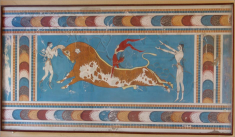Speaker
Description
The relativistic heavy-ion collisions aim to create the matter under high temperature and high density, called Quark-Gluon Plasma, and study its properties. Strange and multi-strange hadrons have a smaller hadronic cross-section than light hadrons, making them a better probe for comprehending the early stages of relativistic heavy-ion collisions. In 2018, isobar collisions, $^{96}_{44}$Ru+$^{96}_{44}$Ru and $^{96}_{40}$Zr+$^{96}_{40}$Zr, at $\sqrt{s_{\mathrm {NN}}}$ = 200 GeV have been performed at RHIC. These collisions are considered to be efficient in reducing the flow-driven background contribution in search for the Chiral Magnetic Effect (CME). Flow measurements are quite sensitive to the different deformation characteristics between the two species. A comprehensive elliptic flow measurements of strange hadrons give direct information about the initial spatial anisotropies and help to understand the CME background. The collected datasets include approximately two billion events for each of the isobar species and provide a unique opportunity for statistics hungry measurements.
In this talk, we will present the elliptic flow ($v_{2}$) of $K_{s}^{0}$, $\Lambda$, $\bar{\Lambda}$, $\phi$, $\Xi^{-}$, and $\overline{\Xi}^{+}$, at mid-rapidity (|y| $<$ 1.0) for Ru+Ru and Zr+Zr collisions at $\sqrt{s_{\mathrm {NN}}}$ = 200 GeV. The measurement of $v_{2}$ as a function of centrality and transverse momentum ($p_{T}$ ) will be discussed. The system size dependence of $v_{2}$ with different colliding systems such as Cu+Cu, Au+Au, and U+U will be presented. In addition, the physics implications of such measurements in the context of nuclear deformation in isobars will be also highlighted.
Details
Ms. Priyanshi Sinha
Indian Institute of Science Education and Research (IISER) Tirupati, India
http://www.iisertirupati.ac.in
| Is this abstract from experiment? | Yes |
|---|---|
| Name of experiment and experimental site | STAR |
| Is the speaker for that presentation defined? | Yes |
| Internet talk | Yes |
